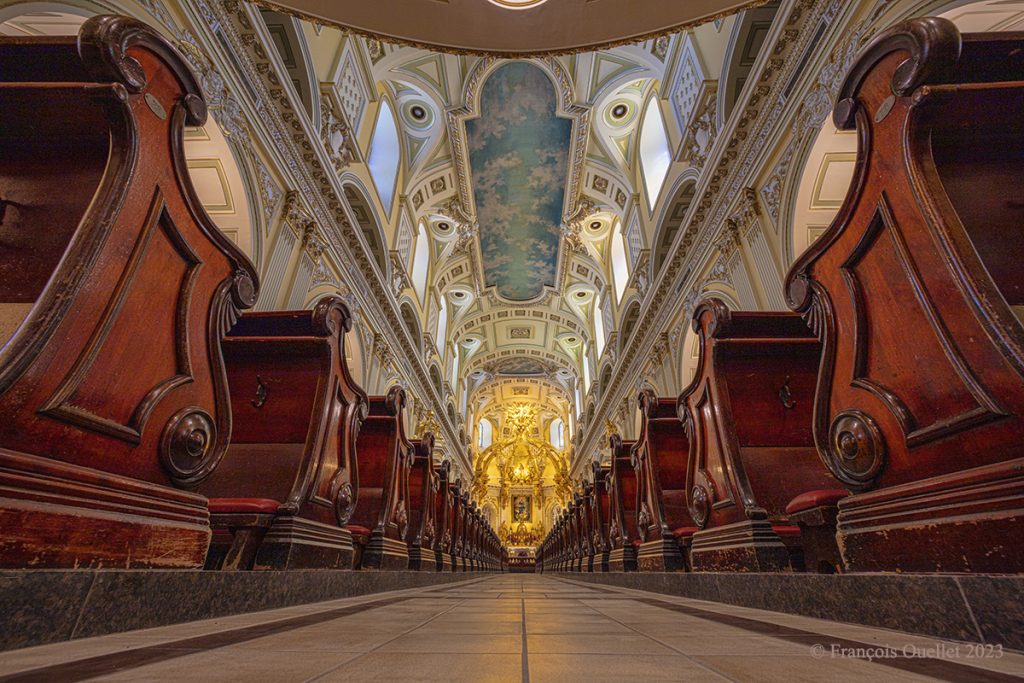
If you get up early enough, you can capture the morning fog. The photographic composition respects the rule of thirds, especially regarding the lone tree, my main subject. I included the picnic table to signify the presence of human activity in the vicinity. This often adds interest to a scene.

Above, I’ve captured flowers by limiting the aperture of the Canon EF 85mm f/1,2 L II USM lens. The flowerbed is on the Grey Terrace in the Parc des Champs-de-Bataille. The emphasis is on the middle row, leaving the others out of focus to create a different effect.

There’s no shortage of space in Quebec when it comes to picking berries. Although it doesn’t appear so in the picture, the Vire-Crêpes business had many customers on its grounds that day. But the estate covers such a large area that it offers people a fairly private zone.

This last photo shows a blueberry plant from Saint-Nicolas, south of Quebec City. The fruits require more time to reach full maturity, but the different colours visible at this stage of growth makes for a more interesting shot.
Click on the link for more photos of Quebec City and Île d’Orléans in Summer on my blog.












